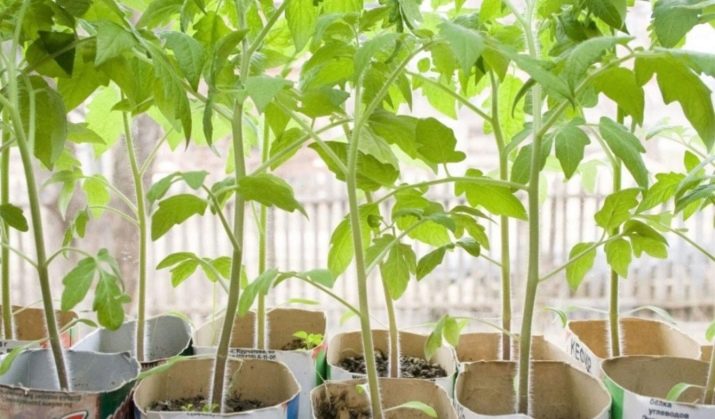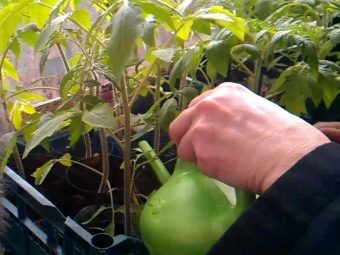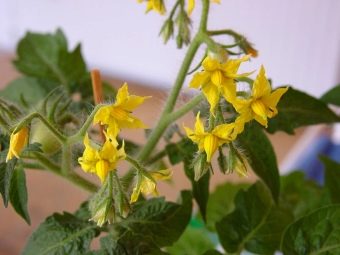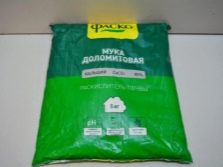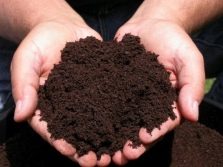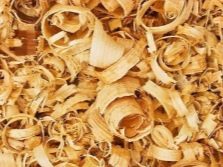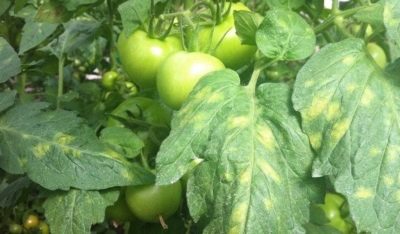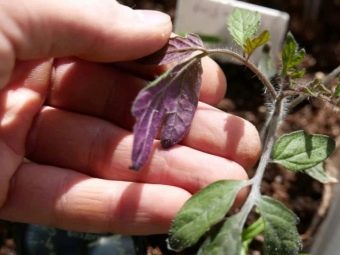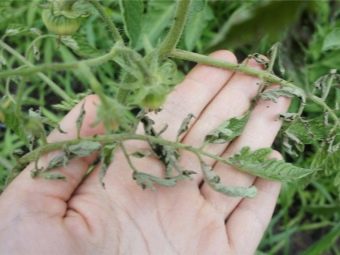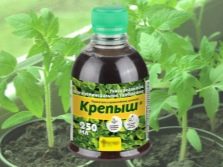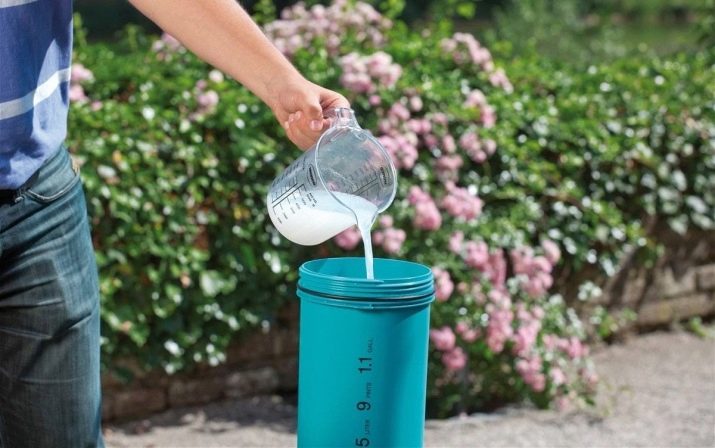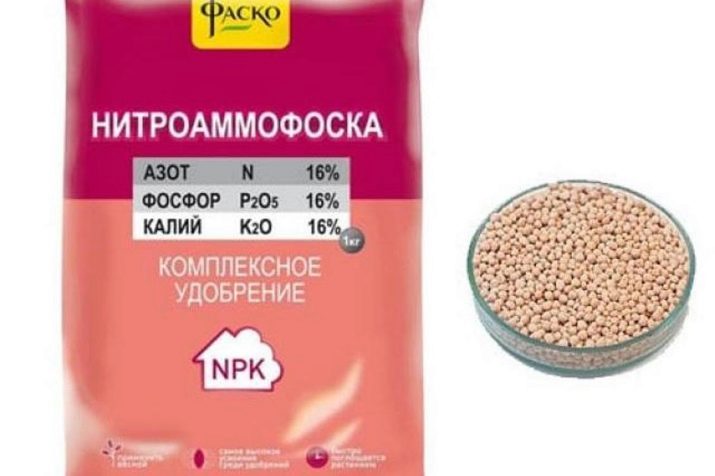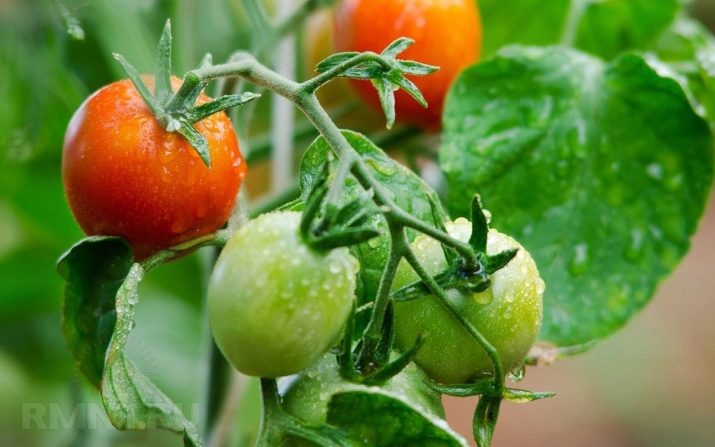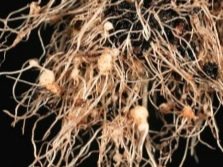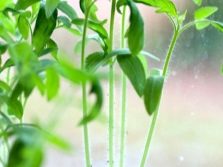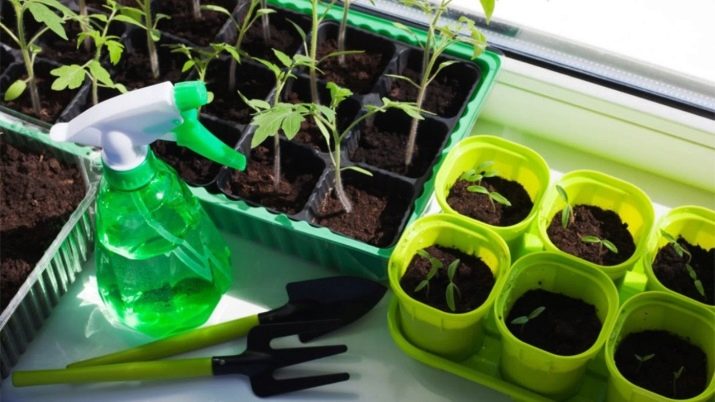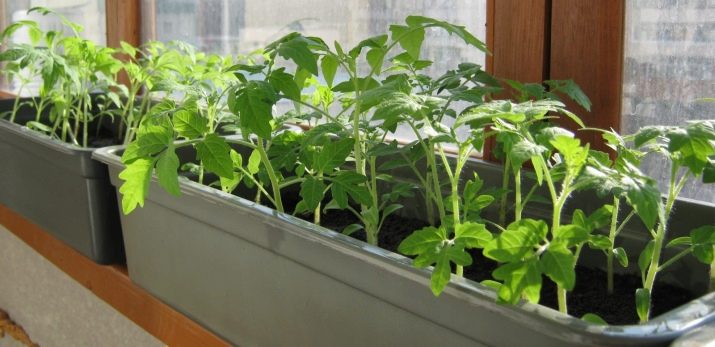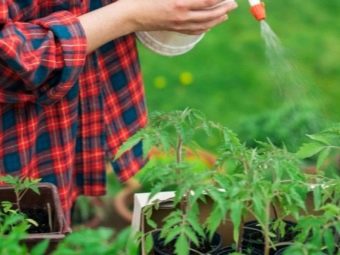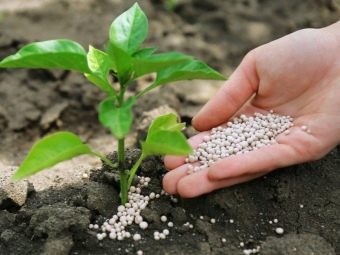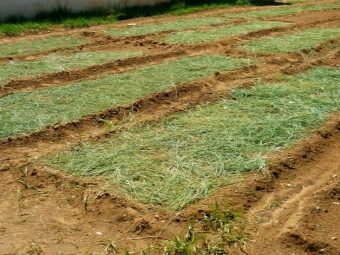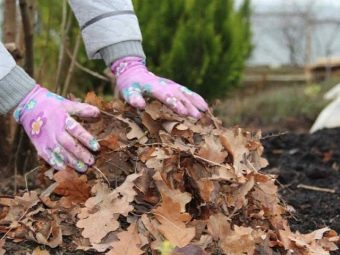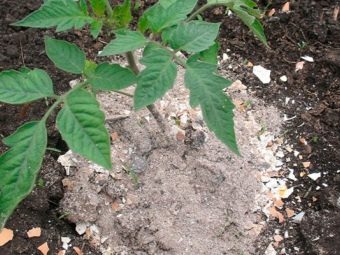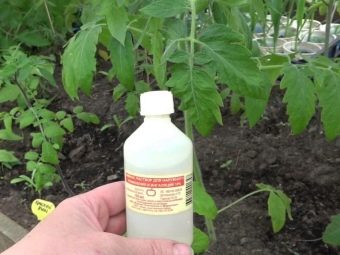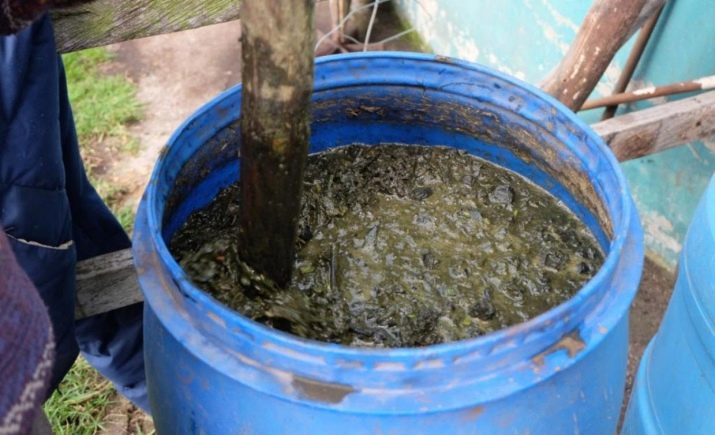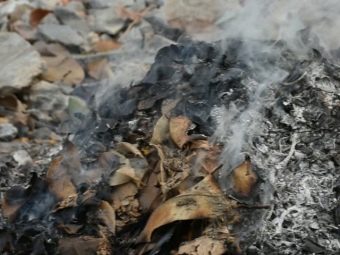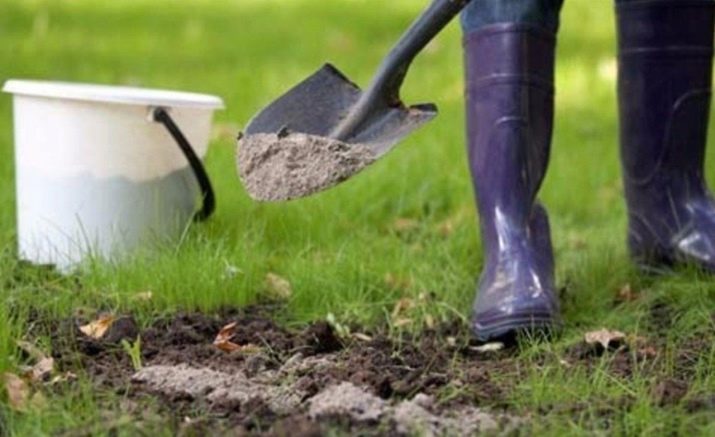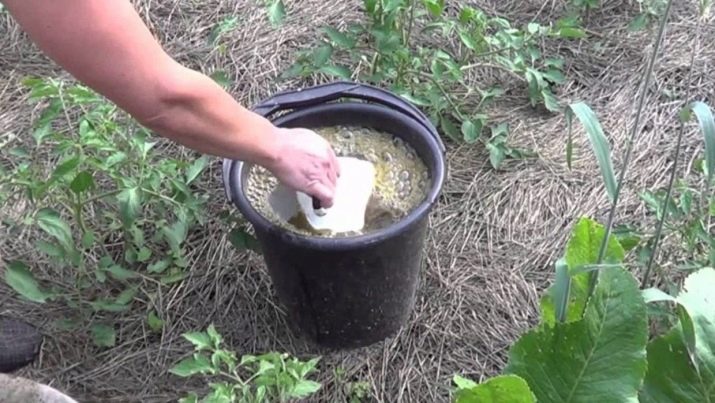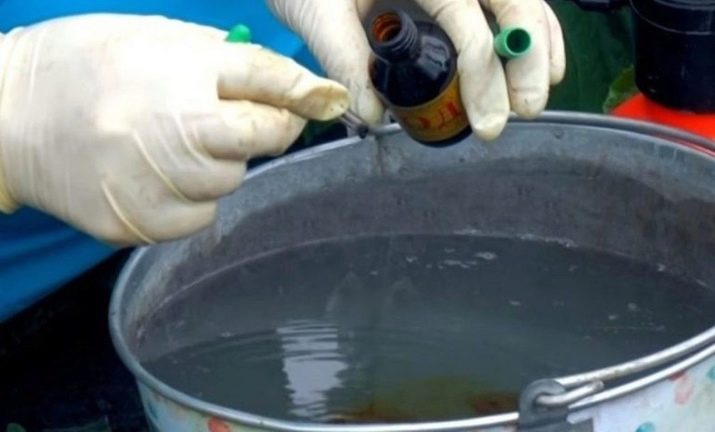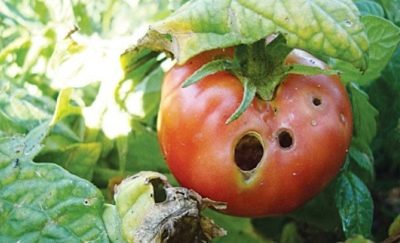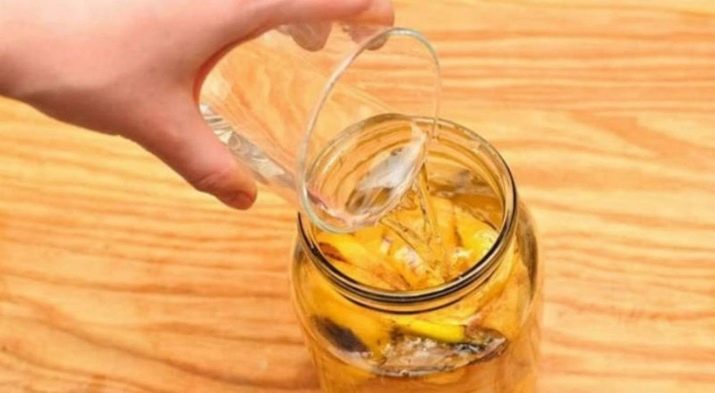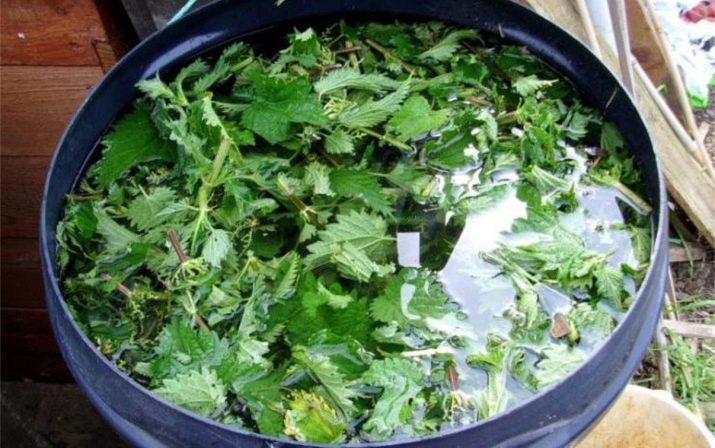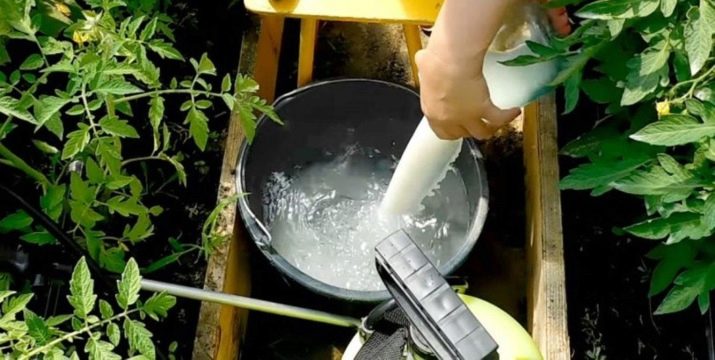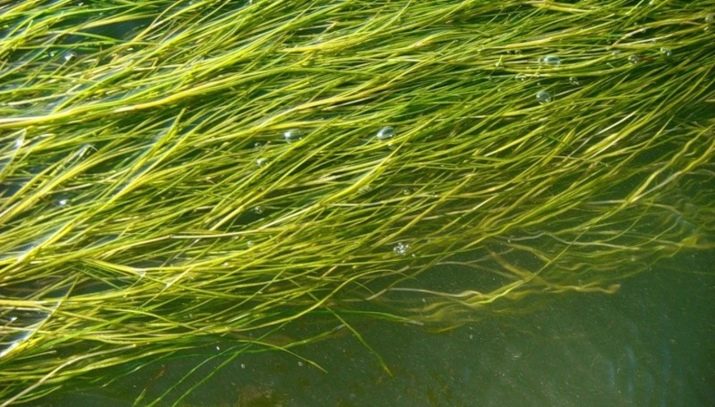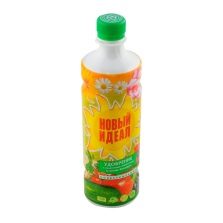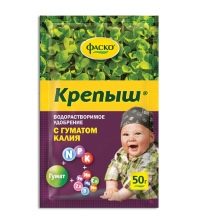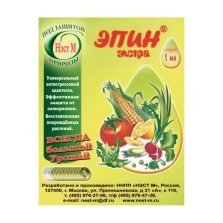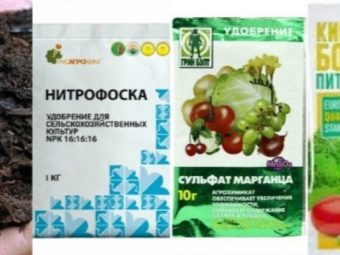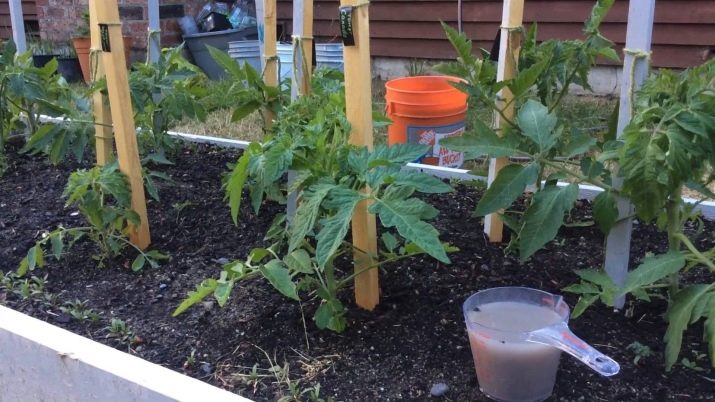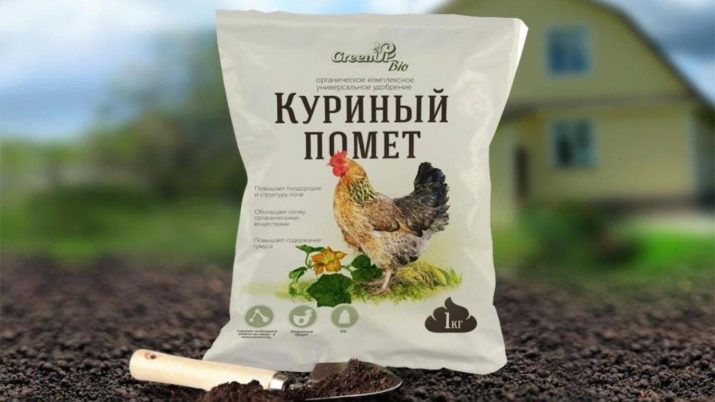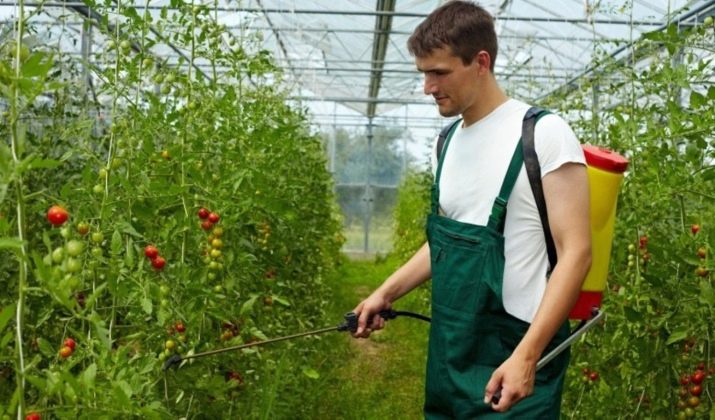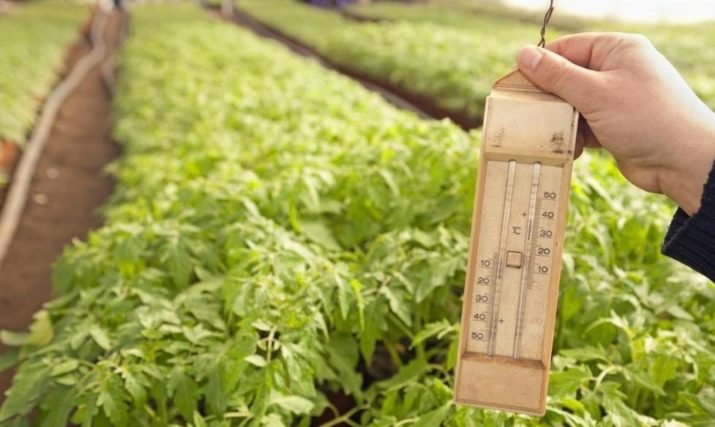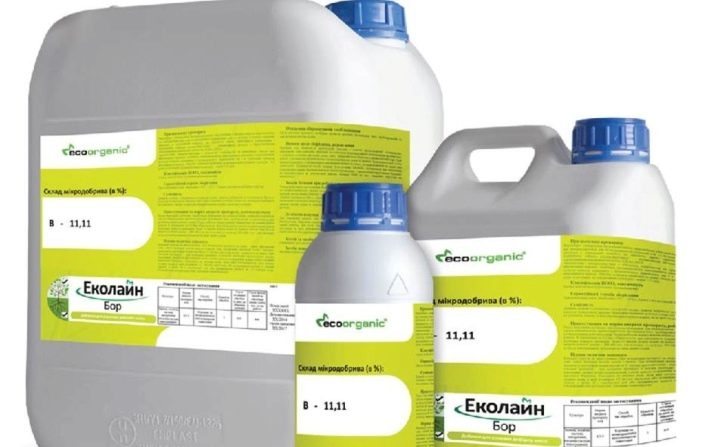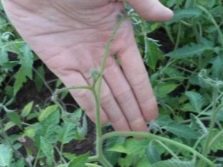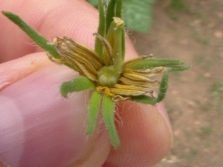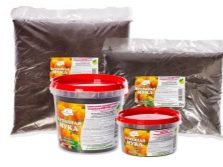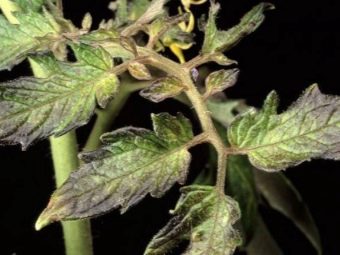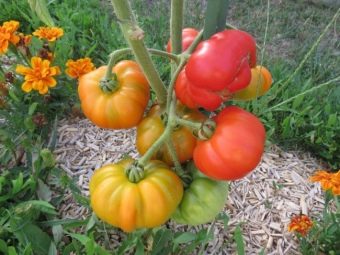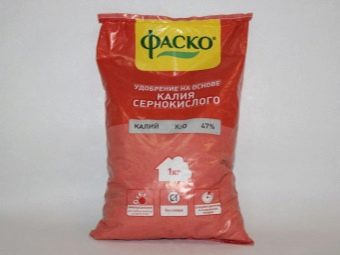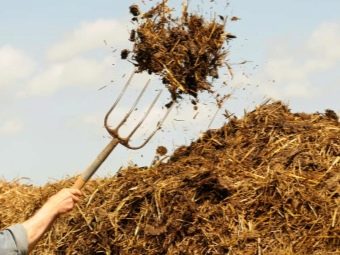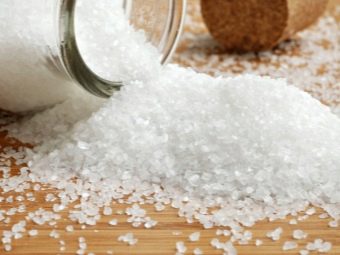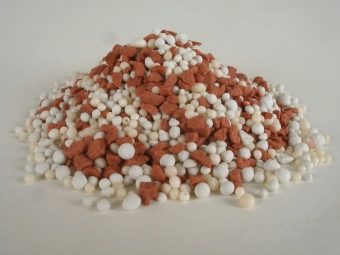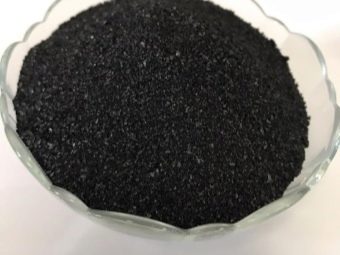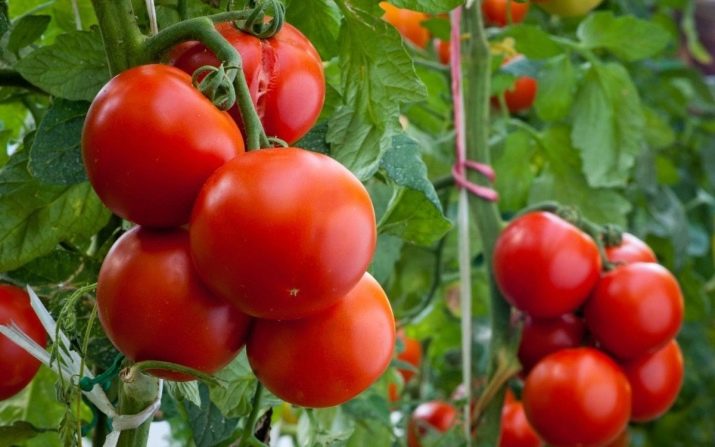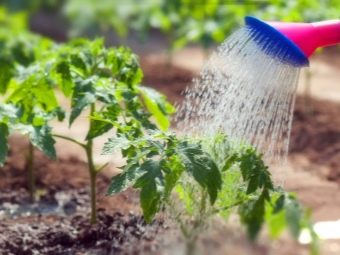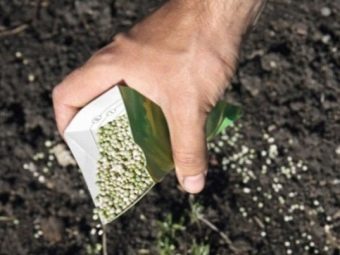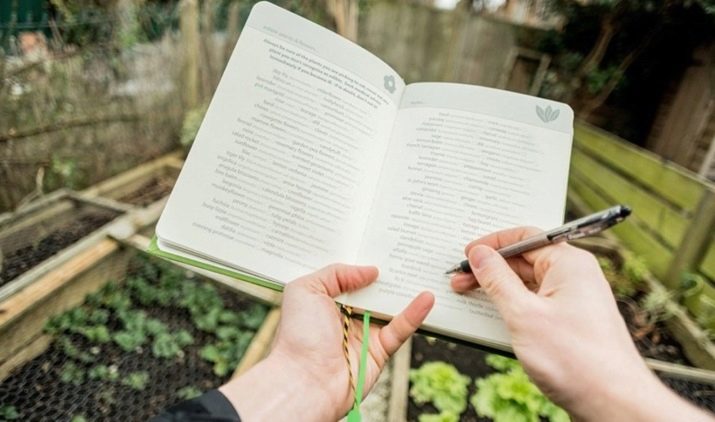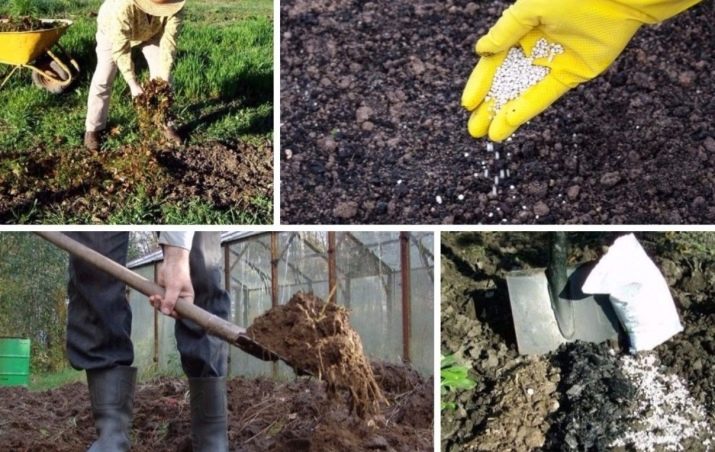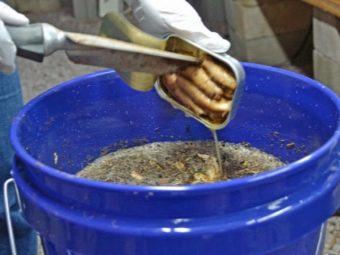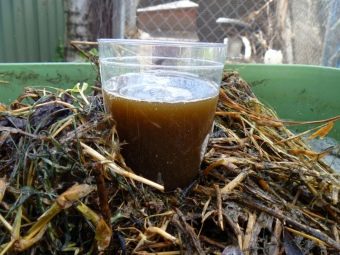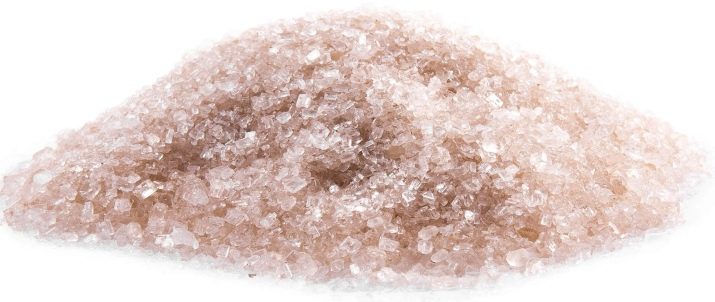What can feed the seedlings of tomatoes?

Own private plot gives you the opportunity to make stocks for the winter, which then significantly saves the family budget from extra costs. Their fruits and vegetables are much more useful, but to get high-quality fruits a gardener has to try a lot. High-quality planting material can guarantee a great harvest, so it is grown from seeds at home alone.
Why do you need extra food?
To tomatoes were strong, with healthy foliage and thick stem, it is not enough to water them and give a sufficient amount of light. Pale leaves, weak, thin tops signal an insufficient supply of nutrients. In this case, resort to additional feeding.
To grow high quality tomato seedlings on a home window sill, it is enough to study the characteristics of applying the selected fertilizers. The formation of the shoots is monitored from the very moment when the seed sprouted and a small sprout appeared on the surface of the soil. If in time to feed the bush, then by the time of landing in the ground it will be healthy and strong.
Plants for growth and development require the necessary nutrients throughout their life cycle. Many of them can be found in the soil, but often in insufficient quantities to maintain high yields. Soil and climatic conditions can also limit the absorption of essential elements by plants at key growth stages. Tomatoes need 13 essential minerals that play a number of key functions. If any of these is missing, plant growth and yield are affected.
Gardeners often control the amount of the crop by feeding the plants with what they need in an environment that is protected from changes in soil and weather conditions. In all situations, it is important that the composition and amount of fertilizer match the needs of a tomato.
Of the secondary nutrients needed at the initial levels, calcium can be noted, which strengthens the plant cells and prevents the onset of various fetal diseases. Healthy fruits that receive an item in the required quantity are less susceptible to damage and have a longer shelf life. Vegetables containing a high percentage of calcium, are of great value for human health. Eating fresh tomatoes with a dense skin will help us get the calcium needed for strong bones.
Sulfur is an integral part of many amino acids and proteins. Micronutrients strengthen and accelerate the growth of bushes, provide them with essential and secondary nutrients. Manganese, iron and copper affect photosynthesis - the process by which plants use sunlight to grow. Boron is necessary for the development of shoots and roots and is very important during flowering and fruiting. Zinc is essential for the production of important phytohormones.
Professional gardeners use not only organic, but also mineral fertilizers. Very rarely, a plant can grow healthy without top dressing, more often pale green small foliage can be traced, which will turn yellow with time. Such a seedling always grows poorly and later gives a meager crop, thus the gardener is wasting his own strength.
It is best when sowing tomato seeds to use a special soil, which already contains the necessary components, including nutritional supplements. Plants in this case will need fertilizer only after planting in open ground, so that they can become stronger and strengthen in the ground by the root system.
Since ancient times, folk remedies have been used, and professionals have advised beginners to prepare the beds in advance, long before the seedlings are planted in them. Until it was cold, on the site where in the future it is planned to make a plantation of tomatoes, it is necessary to decompose the humus, you can use the humus mass. Actively added to the ground:
- dolomite flour;
- peat;
- wood shavings;
- lime.
You can not just make fertilizer, not knowing exactly what the plant lacks. The appearance of the tomato clearly demonstrates the lack of one of the necessary elements in the soil. If the foliage of a tomato seedling has stopped sharply in growth, has become pale and even has become covered with spots, it is definitely time to think about introducing nitrogen into the soil. But if you overdo it with the additive, you can get as a result of lush foliage and a small amount of fruit, which also harms the gardener.
None of the plants can do without phosphorus, but its excess leads to the fact that the foliage begins to fall, turns yellow. We noticed a purple hue on the tomato leaves, which means that this element is missing. Excess phosphorus in combination with a lack of nitrogen and potassium leads to twisting of tomato leaves.
Every gardener, who treats his work with great responsibility and wants to get a healthy big harvest, should strictly follow the time of application and the amount of feeding. In this case, the more, the better - this is a wrong judgment: an overabundance of minerals in the soil can worsen the situation.
Professional gardeners do not recommend fertilizing before the first leaflets appear. At this stage of development, the plant directs all the forces to strengthen the root system, all you have to do is to help it in this. As finished products are used:
- "Burly";
- "Nitrophoska";
- Agricola Forward.
All products are complexes of essential elements of tomato. The first watering is more concentrated, the subsequent solutions are diluted weaker. Ten days after the first feeding, you can repeat it and add manganese to the water. The superphosphate solution helps to achieve thick and strong stems with healthy dark green foliage. Already proven by experience that adding additional feed increases the yield up to three times.
When is it not necessary to fertilize?
There are also cases when the plant does not require fertilizer. If you follow certain rules, you can avoid problems in the future. For example, you should not use anything for two weeks after picking. It is enough to make serum from potassium sulphide and superphosphate to support the plant during this period. On a bucket of water each component is enough to add a tablespoon.
Some people prefer to replace this solution with a nitroammofosca, which can be used again two weeks after the first watering. Before transplanting into the ground, seedlings should be watered for fifteen days and not later.
It is not recommended to immediately use fertilizers after transplantation into a greenhouse or open ground, because at this moment the bush goes through the acclimatization stage, and the gardener can only overload the plant. A week and a half is a sufficient period during which the tomatoes will rise and acclimatize.
It is necessary to make any fertilizer only as necessary, and for this it is important to monitor the state of the foliage and stem. If after landing there is heavy rainfall, then the amount of top dressing needs to be doubled, but only if there are indications. That is, watering is done more often, but in lower concentration, so as not to burn the foliage.
There are those who believe that if simple grass grows well without additional efforts, then the tomato will also be able to give a good harvest. It must be remembered that such vegetables are a product of selection, they have the best quality of fruits, but they can provide a harvest only with additional support. Care and care - the first assistants gardener.
The use of active elements increases the biological strength of the seedlings, after which it not only quickly grows, but also gives full-fledged inflorescences, strong roots and strong stems that act as highways for the delivery of the elements necessary for nutrition to the fruits.The main development assistants are nitrogen and potassium, phosphorus is responsible for the metabolic processes, which helps deliver nutrition to all parts of the tomato. A deficiency, like an excess of one or another element, will lead to a deterioration of the immune system. This is one of the main reasons why fertilizers should not be applied if they are not required by the plant.
Lack of a sufficient amount of potassium will lead to weak roots, which by the time of transplantation will not be ready to adapt to the growth in the soil. As a result, tomatoes are stressed, poorly take root, wither. At the first vegetative stage of tomato development, one of the most important roles is played by iron - the first defender of immunity. Determine its lack of easy, just look at the shade of foliage. If steel streaks are visible, it's time to do top dressing.
Like a person, a plant needs a certain amount of calcium, the lack of which leads to the rapid growth of a thin and long stem. If you do not know what exactly may be the cause of the poor state of the vegetable and allow the possibility of a shortage of several elements at once, then conduct a comprehensive diet.
Feeding scheme
It is required not only to start feeding at the strict time, but also not to exceed its quantity. At the first stage, the gardener should take care of the quality of the soil and its composition. It is the land with the required nutrients will be a favorable environment for plant development. Seed can germinate and give the first shoots.
The top dressing scheme implies fertilizer application for the first time, as soon as the first two leaves appeared. The second feeding is used after picking, not earlier than in two weeks. The third time you can add nutrient solution, two weeks after the second feeding, and then four days before the plant is transplanted to the garden.
Unfortunately, picking is a great stress for tomatoes, but it is vital for the seedlings to develop fully further. This is one of the reasons why in this period it is necessary to exercise food, taking into account the peculiarities of the solanaceous culture, observing time and following the schedule.
You can strengthen the tomatoes, if you feed them ten days before picking.
The secret to growing good tomatoes indoors or outdoors is phosphorus. In order not to burn the roots and stems, you need to apply fertilizer only on a wet substrate. First, it is necessary to enrich the earth with phosphorus and nitrogen, therefore, it is important to approach the choice of the finished fertilizer with particular attention, having studied its composition in detail. It will not be superfluous to make mineral preparations so that they do not fall on the foliage.
If everything is great and the plant at the second stage develops without problems, then re-feeding with the same means is performed. If you noticed that the sprouts began to pull out, a surplus of nitrogen definitely went out, which is excluded from the makeup. It is useful to increase the daylight hours and adjust the temperature in the room, which should not be above 18 degrees.
The third stage is characterized by the introduction of foliar organic dressing. Saplings will get stronger faster, gather green mass. At the fourth stage, fertilizers are applied by the root and foliar method in the evening, in the morning. This will avoid UV burns. Emphasis is placed on the introduction of potassium, which has a beneficial effect on inflorescences.
Effective means
Success with growing tomatoes begins with the soil. The inclusion of compost and compost manure during planting, as well as mulching with organic means such as grass pruning or autumn leaves, will be of paramount importance.
For good growth and for trunk thickness, you can use:
- nitrogen fertilizers;
- organic compounds;
- phosphate fertilizers;
- ash;
- superphosphate;
- urea;
- ammonia;
- ammonia, etc.
Korovyak used for self-growing seedlings in the country, it is made on the beds in the fall.If you want to feed them a bush during growth, then it must ferment, otherwise you risk burning the roots. Preparation of the solution does not require additional skills. The cow in the water must stand in the sun for a few days to ferment.
The solution already prepared in this way is added to the water in the required quantity and watered under the bush. Manure is also used in the same way, and it is preferable to deposit it in the ground in autumn. Before landing, he will propreet and will not harm the root system.
No matter what litter is used, cow or chicken, the mixture must be rotted, if you do not want to ruin the tomatoes.
Of the simplest fertilizers, ash is ideal. It has a huge amount of useful ingredients for tomato. It can be obtained in several ways:
- from the oven;
- burnt foliage and twigs.
The ash contains:
- calcium;
- phosphorus;
- potassium.
They are vital for the rapid development of the plant. Precisely because too many elements described above will lead to negative consequences, gardeners recommend bringing it in from the fall and digging up the ground or adding it to each bed during planting into the ground. If it is decided to just fill the territory with ashes, then for one square meter its amount should not exceed 0.5 kg. At registration of each hole, 2 tablespoons are put inside and not more.
Strange as it may sound, yeast can also be an excellent feeding for tomatoes. The result will not be long in coming: the growth of green mass will accelerate, and the harvest will certainly please. The solution is applied at the place where the seedlings will grow constantly. Live yeast is diluted ten grams per 10 liters of water in water. To speed up the process, some gardeners add sugar.
Yeast contains a variety of substances that beneficially affect the healthy growth of plants. If you have a stale beer, dilute it with water and pour the tomatoes. Professionals remind that you can only use top dressing with yeast under the root system.
There are other tricks that will help get the fruits ahead of schedule, for example, the use of iodine. It is enough to pour 4-5 drops into a bucket of water, then pour the tomatoes over the resulting solution. If you spray the leaves, the effect will be noticeable even faster, but the quantity of the component should be less - 2-3 drops. Despite the quick positive effect, iodine can damage the plant.
If you decide to use urea as a source of nitrogen, then strictly observe the amount of the element and do not recharge more often the prescribed scheme. It is this component that accumulates nitrates in fruits, which is why urea is used only when the bushes have already grown and are fully formed. It is allowed to spray or water under the root. To normalize growth, twenty grams per square meter of soil is enough.
There is a sufficient amount of nitrogen in the composition of liquid ammonia. At the stage of picking, ammonia is introduced into the ground. For 8 liters of water, add 20 grams of powder. Moreover, sal ammoniac drives away a medvedka, which after planting in the ground can eat up the roots of the tomatoes, until they are firm and not fully formed.
For prevention, the concentration is increased to 10 ml per ten liters of water. 0.5 liters of the prepared solution is put into each previously prepared hollow.
Often, gardeners talk about potassium permanganate, which is sprayed with tomatoes so that they do not lose flowers. It should not be used more than once a month.
Hydrogen peroxide contributes to:
- damage disinfection;
- prevention of root decay;
- oxygen saturation;
- boost the immune system.
An even simpler and more effective way to make a make-up is to make a banana peel. One fruit per liter of water, time of insisting - two days.You can replace the banana eggshell, as soon as there was an unpleasant smell - the solution is ready for use.
Slept coffee can also be used as a fertilizer for plants. Nettle is one of the best balanced fertilizers. To prepare the solution for watering, leave the nettle leaves in a bucket of water for 3 days. It can be dry or fresh cut. Another option: grind dried nettle and add to the soil.
Some gardeners use milk as an additional food. It contains:
- potassium;
- calcium;
- copper;
- magnesium;
- phosphorus;
- zinc.
Green tea is especially useful for plants, as they require large amounts of iron. Instead of throwing out green tea leaves, simply sprinkle the soil on them under the bushes.
Fish meal is another natural fertilizer for tomatoes, which gives them an extra charge both during transplantation and during the growing season. It is rich in phosphorus, nitrogen and potassium, as well as other important minerals such as magnesium, calcium and sulfur. Available as a concentrated liquid fertilizer, it is produced by mixing various parts of fish, including bones.
Unlike composts, nutrients in this version are available to plants immediately.
Alfalfa is an indispensable means of additional feeding with the necessary set of trace elements and beneficial hormones. Tomatoes planted in such a compost, give a rich harvest.
If you live near the beach, try to feed tomato plants with algae, they have more than 60 trace elements that have a decisive effect on the formation of fruits. Today, the market can find such a fertilizer in liquid form.
Not all gardeners are willing to spend time preparing mixtures and solutions, it is much easier to buy a ready-made product that is sufficient in accordance with the manufacturer’s recommendations to dissolve in water or sprinkle on the ground. Among them:
- "Ideal";
- "Burly";
- nitroammophoska;
- superphosphate;
- "Appin".
The main thing that is required from the gardener is to strictly follow the instructions. Use in high dosage will lead to accumulation of nitrates in tomatoes.
Mineral fertilizers have been used for quite some time, they help speed up the growth of saplings, strengthen the root system. Superphosphate is used more often than others, and all because it is rich in a large number of trace elements. Potassium sulfate is not composed of chlorine, it helps to strengthen the immune system and increase the number of fruits on the bushes. If you want to accelerate the growth of foliage or shoots, then use ammonium nitrate.
It is not necessary to bring into the soil or on the plant only one specific element, a complex top dressing is the most effective way to help tomatoes.
If you decide to prepare the solution yourself, then take two liters of water in the following proportions:
- 1 g of urea;
- 3 g of potassium sulfate;
- 8 g of superphosphate.
The solution is used for root irrigation.
For foliar and root use can be dissolved in 1 liter of water:
- 0.6 g of ammonium nitrate;
- 4 g of superphosphate;
- 1.5 g of potassium sulfate.
For the thickness of the stem, many gardeners use organic fertilizers. They are distinguished by a large amount of nitrogen in the composition, so it is advisable to use them in the early stages of development. The recipe is simple: 1 kilogram of bird droppings are diluted with 10 liters of water and infused for several days.
Not all gardeners are ready to use chemicals when growing crops: the quality and positive effect of folk remedies are in no way inferior to them, but are considered safer.
You can use magnesium sulfate, which is added to each well in a tablespoon or used in the form of a solution for spraying. Per liter of water is enough two tablespoons. Benefits of use:
- small price;
- simplicity;
- quick effect.
How to apply fertilizer?
It is as easy to fertilize seedlings on a windowsill as it was after planting them in the ground. Foliar top dressing is considered preferable, care easier and watering can be precisely calculated portion. The foliar method is good in the open field, since the plant is pollinated by fertilizer, it is not easy at home to do so, so as not to apply it to surrounding objects.
Excellent at the first two stages of development of urea, which is required to breed strictly in a certain proportion, otherwise you can burn the roots. The lack of moisture on the foliage at first prevents the appearance of fungus and other diseases. In tomatoes, a special relationship to high humidity, so gardeners are advised to ensure that its level does not exceed the permissible.
Before the solution is applied to the soil, the ground should be moistened, but not too much. At the stages when foliage and buds are formed, fertilizer can be sprayed. So the effect can be achieved faster, because through the pores in the leaves the elements enter the life-support system in less time. Spraying is carried out in the morning so that the sun rays do not burn the bush through the drops.
Fertilizing through the soil takes a long time until the roots deliver nutrients to all parts. Green mass almost immediately absorbs trace elements, such emergency assistance is needed when urgent harvest is required. But it is worth remembering that when creating a solution for spraying, the number of elements in it must be reduced.
None of the plants can not do without boron, because it is he who is responsible for the taste of the fruit. Tomatoes become sweeter, more ovaries appear, and accordingly the amount of the crop increases markedly. It helps to protect tomatoes from certain diseases and parasites. Preparation of the mixture requires compliance with the formulation.
To one liter of heated water add 1 gram of boron. The liquids are allowed to cool, and then they are sprayed onto the foliage and ovaries, covering the already formed fruits. On one bush leaves at least 10 ml of the composition.
Organic compounds are not prohibited to make the root, but in diluted form, so as not to damage the roots. If the earth is too acidic and the plant with its entire appearance signals a lack of phosphorus or calcium, then it is recommended to use foliar feeding.
It should be understood that acidic soils with low pH and high clay content lack macronutrients: N, P, K, Ca, Mg and S, while alkaline ones lack B, Cu, Fe, Cl, Mn, Mo and Zn. A soil with a pH between 6.0 and 6.5 contains an adequate amount of both sets of nutrients.
Not every gardener knows how to determine which dressing should be done. As mentioned above, plant nutrient deficiency has its own symptoms.
Nitrogen deficiency:
- small or light green leaves;
- very slow growth and short stalks;
- flower buds fall.
It is corrected by adding a mixture of high nitrogen content, for example, blood meal.
Phosphorus deficiency:
- foliage color is purple;
- small leaves;
- late fruiting.
You can correct the situation by introducing bone meal into the soil.
Potassium deficiency:
- slow growth;
- fruit ripening is uneven;
- dying leaves.
The problem is eliminated by adding potassium-rich fertilizer, such as potash, or by mulching with organic material.
Boric insufficiency:
- black areas at the point of stem growth;
- stalks with stunted growth;
- abnormally fluffy plant.
It is best to feed manure.
Calcium deficiency:
- upper leaves turn yellow;
- plants seem weak;
- thick, woody stems with dead zones.
The situation can be corrected using bone meal.
Magnesium deficiency:
- fragile, twisted leaves;
- fruits without taste.
To help the plant make fertilizer by mixing dolomite lime and one tablespoon of salt.
Which tomato fertilizer you use will depend on the current nutrient content of the soil available. Before you begin to bring elements into the ground to maintain the tomatoes, it is best to find out what is missing.
If the soil is properly balanced or with a high nitrogen content, it is necessary to use fertilizers whose nitrogen and phosphorus levels are lower, for example, 5-10-5 or 5-10-10. Such compositions are mixed, they are easy to use. If there is not enough nitrogen, use a mixture, for example, 8-8-8 or 10-10-10. If it is not possible to test the soil, but there have never been problems in the past with the growth of tomatoes, you can assume that the soil is balanced and use fertilizers with a high content of phosphorus.
Fertilize must begin after the flowers are fertilized. Then, according to a strict scheme with an equal interval, additional feeding is made up to the first frost. If you want to help the plant in the first stages of planting, then add a little mixture to the well, where you put the tomato. In such a soil, it will take root faster and grow.
In most cases, the method of fertigation is used to apply fertilizers, that is, they must be dissolved in water and then watered with a solution under the plant root. It is necessary to take into account such properties as solubility and compatibility of certain elements. The frequency of fertilizer application at each stage of tomato cultivation depends on the properties of the soil / substrate and their ability to retain moisture. A tomato must receive an adequate supply of all the necessary nutrients so that the gardener can harvest a decent crop.
As a chemical fertilizer, a product is made that contains one or more essential nutrients in an accessible or potentially accessible form. Such products are less bulky, easy to transport and quickly accessible to plants. In the sale they come in granular, powder or liquid form.
Among the main advantages:
- contains a balance of essential nutrients;
- does not contain salts that harm the natural biology of the soil and kill good bacteria;
- contains a special form of ammonia, which contributes to the development of flowering;
- a unique blend of minerals that enhance the flavor of the fruit;
- contains humic acid to stimulate growth;
- improves the physical properties of the soil.
In addition to formulations with only one chemical compound, there are mixed compounds containing two or more compounds in suitable proportions. The recommended dose of chemical fertilizers for tomato:
- nitrogen - 66-110 kg / ha;
- urea or ammonium sulfate - 35-60 kg / ha.
During the application of fertilizers, nitrogen, phosphorus and potash must be laid in the soil before planting, the rest of the nitrogen must be applied in 2 equal doses after 30 and 60 days.
Urea spray is useful when plant growth is slow, a component (2-3%) is sprayed depending on the age of the plant, boron and calcium are also used as a foliar spray. Fertigation soluble fertilizers are mixed together with water and served by drip. The amount of the three basic plant nutrients (N, P and K) required for use in the soil can be determined using a soil test.
When feeding tomatoes during planting, mix the fertilizer with the soil at the bottom of the planting hole, then add some more ordinary earth on top of this before placing the seedlings in the ground. If fertilizing comes into contact with the roots, it can burn them.
After watering, fertilizer spread on the ground, starting from about 10 centimeters from the base. Too close a location can lead to the fact that when watering or in the rain the dressing gets on the stem and burns it.
Proper feeding takes into account a number of rules:
- the composition should not be cold or hot, it is necessary to take into account the temperature;
- when buying a new product, use it only on one plant;
- no excess of organic matter;
- top dressing is carried out in the evening;
- root feeding is not carried out on dry soil, previously water is watered under the bushes;
- The concentration of liquid fertilizer should be such as not to damage the foliage.
If you use water-soluble fertilizer, try to avoid spraying it on the plants themselves. Instead, focus your efforts on the roots. Tomato gets almost all the nutrients through the root system.
Tips experienced gardeners
Experienced gardeners share tips that even help a beginner to grow a decent harvest in their garden.
- It is very useful to start a diary, where it is worth making notes, when the last time fertilizers were applied. It is possible to repeat the process after planting into the ground every two weeks, and to abandon it in the normal development of plants.
- If you used a pre-enriched soil mixture, you do not need to fertilize the seedlings, but if some of the leaves are yellowed, use liquid solutions with nitrogen or phosphorus of lower concentration. A few days later, under the high-quality light, a young tomato will quickly grow. Some experienced gardeners in this period transplant the vegetable into large containers to make it strong.
- Feed the culture with liquid balanced fertilizers, such as compost tea, comfrey or solid organic fertilizer in powder or granulated form. Liquid feed can be watered around the base of the plants or applied directly to the leaves of the crop. Solid fertilizers are sprinkled or laid out around the root system of each plant.
- Gardeners get a big harvest and large tomatoes, using a variety of fertilizers. There are several reasons why they prefer to use only organic mixtures - they provide the plant with essential trace elements for a long time and do not harm them, while maintaining the safety of the fruit. In turn, chemical inorganic fertilizers have several advantages. Basically they are cheaper and take less effort when cooking.
- Organic fertilizers derived from plants and animal products are excellent for the long term. They can be used in the fall, thus preparing the ground for future planting. Such feeding does not harm the root system.
Other benefits:
- soil improvement;
- assistance in the absorption of nutrients.
The most commonly used organic fertilizers:
- fish emulsion;
- blood meal;
- bone flour;
- compost and compost tea;
- manure.
- Today, ready-made inorganic fertilizers are widely used, made in the form of mixtures: ammonium sulphate, soil from minerals. They are estimated by percentage of nitrogen (N), phosphorus (P), and potassium (K). All fertilizers have a high percentage of phosphorus, their proportion looks like 5-10-5, where 5 is the percentage of nitrogen, 10 is phosphorus and 5 is potassium.
- Some gardeners use both organic and inorganic substances at various stages of plant growth. It is recommended to use inorganic mixtures 5-10-5 in a weak aqueous solution for feeding seedlings once a week, and at the same time organic mulch and compost to enrich the tomatoes.
- An alternative, simple way to feed tomatoes is a nutrient-controlled fertilizer that lasts for a long period of time.
- It is not always necessary to add additional fertilizer to the soil. This happens if the soil is already prepared and saturated with minerals and organic matter for seedlings.
Summarizing all the above, we can conclude that the use of additional feeding helps the plant to better adapt to the transplant into the soil, and the gardener to collect a decent crop. Overabundance, as well as a lack of calcium, bromine, phosphorus, nitrogen and other elements leads to disruption of the normal growth and development of the plant.
Before fertilizing, it is advisable to make a soil test that will help determine the deficiency of one or another element in the soil. If this is not possible, the gardener should look at the plant and determine the nutritional deficit by the first signs.
You will learn more about the rules for feeding tomato seedlings by watching the following video.

